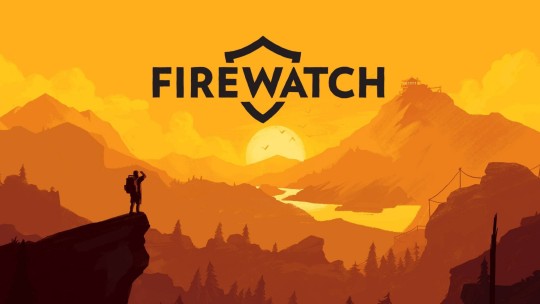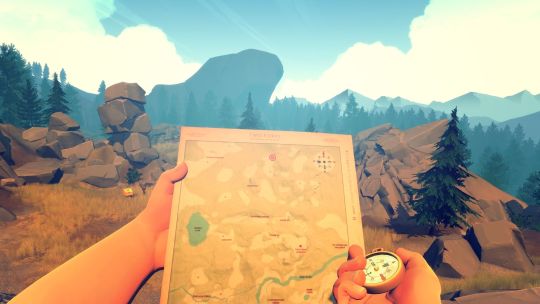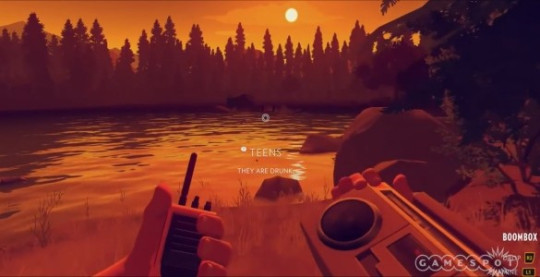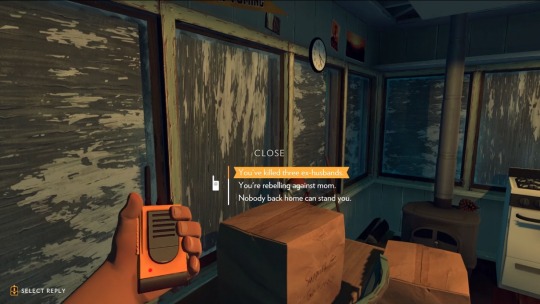#there were maps on the subreddit of who had conversations available at different times in different places
Explore tagged Tumblr posts
Text
Had a dream that the Bachelor route of pathologic 2 came out and Daniil was SO small and SO angry that it was a gameplay feature… like his walking speed was abysmal but he’d walk faster if he got angry so ppl were finding ways to piss off npcs in conversation and timing it so that they’d just stop every now and then on their trek across town to argue with a drunkard and keep powerwalking
#there were maps on the subreddit of who had conversations available at different times in different places#and people were planning routes based off of this to maximize speed#insane#pathologic#bird sings
903 notes
·
View notes
Text
Amazon Is Spying on Its Workers in Closed Facebook Groups, Internal Reports Show
Amazon is monitoring the conversations of Amazon Flex drivers in dozens of private Facebook groups in the United States, the United Kingdom, and Spain, according to an internal web tool and reports left on the open internet and viewed by Motherboard. According to the files left online, Amazon corporate employees are getting regular reports about the social media posts of its Flex drivers on nominally private pages, and are using these reports to diagnose problems as well as monitor, for example, drivers "planning for any strike or protest against Amazon."
Among the files left online is a document called “social media monitoring” that lists closed Amazon Flex Driver Facebook groups and websites across the world, as well as open Flex driver Subreddits, and the Twitter keyword "Amazon Flex." Forty three of the Facebook groups are run by drivers in different cities in the United States.
“The following social forums mentioned in the table are to be monitored during the Social media process,” the document reads. Facebook groups being monitored include “Amazon Flex Drivers of Los Angeles,” “Amazon Flex Drivers,” “deactivated Amazon Drivers,” and dozens of others.
These posts are monitored by something called the "Advocacy Operations Social Listening Team," according to one document on the website titled "Social Listening SOP." According to that document, people on the listening team are supposed to "capture posts" written by Amazon Flex drivers, who are known as "Delivery Partners" or "DPs", categorize them, investigate them (or flag them for investigation), and add them to a report.

Posts can be monitored in real time on a Live tool, and are sorted into one of dozens of different categories, including “App Issue,” “Media Coverage,” “Marketing,” “DP Feedback,” and a host of others. Each of these categories have further subcategories that become more specific and refer to issues drivers may face, such as dealing with an unruly customer, an unhelpful Amazon support staffer, app and GPS issues, and dozens of others.
The documents show that Amazon is systematically monitoring, categorizing, and analyzing the nominally closed social media pages utilized by their Flex Drivers, who are independent contractors who deliver packages and groceries for Amazon and Whole Foods in more than 50 cities across the United States and in several other countries. These workers use their own vehicles. As independent contractors, Amazon Flex drivers do not receive healthcare benefits, sick pay, overtime pay, worker's compensation or other benefits guaranteed to Amazon employees. Amazon also relies on contracted workers employed by small companies, known as delivery service partners, to deliver packages.
Closed Facebook groups have been used by gig workers who work for a wide swath of companies to organize labor actions and strikes across vast, disjointed workforces.

Issues raised by the drivers are compiled into reports that detail specific posts and the action that resulted at Amazon corporate from it, which are delivered to some Amazon corporate employees. Some posts are “escalated” to various teams and Amazon leadership to look into. According to the reports that were left online, the majority of the issues are seemingly tracked to get a sense of the problems that are happening on the app or with the Amazon Flex program, so that Amazon can fix them. For example, one Flex driver posted that they were asked to drop off packages on two separate continents. That post was captured by the tool and was escalated to Flex leadership.

But other posts identify Flex workers who posted negative media articles, "complaints" from drivers and the perceived sentiment of their posts ("positive" or "complaint"). Categories of possible posts Amazon wants to know about include news articles where "Warehouse employees [are] complaining about the poor working condition," "Strikes/Protests: DPs planning for any strike or protest against Amazon," and a category called "DP approached by researchers – DPs being approached by researchers for their project/thesis." Other categories are designed to identify posts where workers are "complaining about Amazon taking away their tips," and any bots or gaming of the system drivers are using to get more shifts.
"[Delivery Partners] constantly mentioned their unhappiness around the block rates along with the surge price," one report stated. Another analysis in one of the reports noted that drivers were upset they were no longer getting as many "blocks," or delivery shifts.
"DPs were complaining of not receiving blocks," the report said. "Many were of the view that the block count has reduced since the holiday and the volume is being taken away by white vans. They are confirming it by asking the station staff. Few have also opined that the decrease in the offers have been noticed not at all stations. Some are definitely being impacted while the rest are just working fine."

Other posts captured and deemed noteworthy were a tweet that shared a Splinter News article titled "'We Are Treated Like Animals,' Say Amazon Flex Drivers," and a Facebook post about a Fox 5 Atlanta article about an Amazon delivery truck driver being held at gunpoint.
"DP happily posted about his good experience of the program during his first ever route," another report stated. "DPs posted negatively about Amazon GPS/Maps," another said.
*
The domain currently pointing to the Amazon panel was registered by a person who's also listed as the point of contact for a business based in India. This person did not respond to an emailed request for comment. Archives of the website show that up to at least February of this year it displayed pages advertising an entertainment company. It is not clear why this particular domain is pointing towards the Amazon panel at the time of writing, be that in error or because it is in use by someone associated with the panel itself.

However, it is clear that this panel, and the reports, have direct connections to Amazon. The tool has an "owners" page that explains who works on the team, and their internal Amazon chat handles. It also has photos of the team that works on it, as well as their first names. Motherboard was able to cross-reference the photos and names of several of the people listed on the owners page with their LinkedIn pages and other publicly-available photographs. According to their LinkedIn pages, many of the employees who worked on this are current corporate employees at Amazon's headquarters in Seattle, while others work for Amazon in India.

Many of the documents also contain hyperlinks that go to internal Amazon URLs. The reports also list the names of teams and specific corporate employees who have had issues escalated to them—Motherboard also cross-referenced the names of these employees within the reports with their LinkedIn pages. Metadata included on some of the files also contains the name of an Amazon employee based in India.
When reached and shown the tool, an Amazon spokesperson did not immediately have comment. Facebook group admins and several of the drivers who were identified in the reports did not immediately respond to requests for comment.
On Tuesday, Motherboard reported that Amazon was hiring two intelligence analysts to track organizing efforts within the company. One of the listings said the company needed an analyst that can keep an eye on sensitive and confidential topics "including labor organizing threats against the company." While the two listings mentioned other threats, they focused mainly on "organized labor," which was mentioned several times. One of the listings had been online since January of this year, according to Amazon's own job portal.
After we published the story on the job listings, the company removed them from its portal, and a spokesperson said that "the job post was not an accurate description of the role— it was made in error and has since been corrected."
Additional reporting by Jason Koebler and Lorenzo Franceschi-Bicchierai
Amazon Is Spying on Its Workers in Closed Facebook Groups, Internal Reports Show syndicated from https://triviaqaweb.wordpress.com/feed/
0 notes
Text
Firewatch: A Story To Tell

Publisher: Campo Santo
Year of release: 2016
Many of the events in Henry’s (The main protagonist) life occur offscreen, and aren’t conveyed in the actual playing of the narrative. His marriage, his getting a dog, the development of early onset dementia in his wife, all of them happen in textboxes at the beginning of the game. The details are necessary to know, so they are told to the player, but they do not need to be shown. The player can make minute decisions during the introduction which have no real impact on the story, but change small details of the world Henry lives in, such as the sketch that Julia draws in Henry’s book changing depending on whether he asks to be drawn like a Victoria’s Secret model or He-Man.

(Above) A screenshot from the opening where the player’s choice doesn’t matter, since the overall narrative plays out the same, but it allows for a more dynamic story
A lot of the little details that do into Henry’s animations are also really fascinating and noteworthy. When Henry exits the tower for the first time in game to go do his job, we see him purposefully duck under a low ceiling, as would be expected of someone in a space for their first time, but we never see it again afterwards. When the player is standing idle, you can also see him fidgeting with his ring when he is sitting down. It’s the little details that make Henry feel so alive that helps make his story, and thus the game, all the more interesting.
A good chunk of the game’s UI is also diegetic, with the map you use being a physical map that Henry holds in his hands, as well as the compass that you can use to get your bearings. This was not necessarily a unique idea, but the way that it seamlessly fit into the game’s setting and overall tone was magnificent.

(Above) The game’s map and compass
When I played Firewatch, I loved it. The game world was vast and beautiful, and I only found myself getting lost once or twice. Talking to Delilah about all of the details in the valley really helped me get immersed into the rich environment that I was surrounded by. I think that the world being so beautiful also came from how fun it was to explore. Going from place to place via absailing or just walking, finding your own way there using the map and seeing the gorgeous landscapes along the way meant that the journey was just as important as the destination, and always as exciting.

The way it told its storytelling was also incredibly fulfilling to me. Since I want to work in narrative based games later in life, seeing the way that Firewatch naturally unravels its story to the player, while cutting out all of the extra days and letting things happen and develop without player interaction was really interesting, and a great thing to learn from. Plus, the story allows for differences in dialogue where a particular answer in one conversation can affect a later conversation, which is always a big plus for making unique stories for different players.

Audience response was very positive. Reviewers often cited the game’s writing and humor as the game’s strongest points, with its heavy focus on the narrative really sparking emotion within them. Online lets plays racked up about 15 million total views in the first month, across YouTubers and streamers like Markiplier and JackSepticEye, who helped boost the game more into the public eye. At the BAFTA Game Awards, it won the award for Best Debut Game, and Cissy Jones, the voice actor for Delilah, won the award for Best Performer.
Most people who played the game loved it as well. The positive reviews from critics were shared with fans, many of whom also fell in love with the game’s narrative and the emotions attached to it. Many formed an emotional attachment to the relationship between Delilah and Henry, and felt that it was one of the strongest points in the game.
Firewatch currently sits at a 9.3/10 on IGN, and an 81 on Metacritic.
Core loop:

The main core loop focuses on starting a new day, exploring through various areas and completing different tasks, before then going home and ending the day only to start a new one, repeating the process. To go along with the Core Loop, the main mechanics are:
Movement Tools: Henry has a few tools and tricks at his disposal that he can use to get around. If he can’t reach somewhere by walking, he can abseil up or down slate if the proper climbing gear is set up, he can climb up or down rock faces or use an axe that the player receives later in the game to cut down obstacles.

(Above) A screenshot of Henry abseiling down a sheer cliff face
The Radio: Henry has a radio with him that he uses to communicate with Delilah on the other end. A prompt will occasionally pop up that allows the player to initiate a conversation with Delilah, or respond to things that she says. When the player is looking at or holding something, the available prompts on what Henry will say is based on what they are seeing or holding.

(Above) An example of the different prompts that pop up when the player uses the Walkie Talkie
Objects: Henry can pick up and inspect objects that he finds in the game world. When he picks them up, it can progress the story, or he can talk to Delilah about what he sees.

(Above) An example of an object that Henry can pick up and examine
In terms of the game’s influence, it doesn’t seem like Firewatch has had much of an influence on the industry. As Campo Santo’s release game, they didn’t have much of a following beforehand, so not many people would have been watching what was going to happen with Firewatch. In addition, the way that it tells its story is similar to other games, such as What Remains of Edith Finch, but it doesn’t act as a direct inspiration. It may have an influence on games that are yet to release, but nothing has really come of it since its initial 2016 release.
But, for a first time release, a sizable community has grown, with both a subreddit and fan wiki being created by the community. There is also the discussion boards on Steam. Both the Steam boards and subreddit are updated relatively infrequently, but a core group of players seem to gather there frequently.
Those communities can be found here:
https://www.reddit.com/r/Firewatch/
https://firewatch.gamepedia.com/Firewatch_Wiki
https://steamcommunity.com/app/383870/discussions
But in the end, Firewatch was a beautiful experience that brought together an incredibly compelling narrative, a beautiful world, and a story for everyone to share.

Sources:
https://www.polygon.com/2016/2/12/10966494/firewatch-agency-campo-santo
https://en.wikipedia.org/wiki/Firewatch
https://www.firewatchgame.com/
https://twitter.com/camposanto?lang=en
https://www.kotaku.com.au/2016/03/in-firewatch-your-choices-dont-matter-and-thats-okay/
https://www.theverge.com/2016/2/10/10960366/firewatch-interview-ps4-pc
https://guides.gamepressure.com/firewatch/guide.asp?ID=34088
https://panic.com/blog/firewatch-one-month-later/
https://www.polygon.com/2016/2/8/10900796/firewatch-review-pc-ps4-playstation-4-campo-santo
0 notes
Text
SEMrush: 5 Creative Ways to Use Social Media for Lead Generation
Nowadays there’s no need to assure you that social media is an incredibly rewarding tool for lead generation – in 2018 it seems obvious. And how could it not be – it’s easily available to anyone, and it functions on the principles of engagement and communication, which makes it perfect for a marketing specialist.
The truth is, social media lead generation is slowly taking over traditional ways of lead generation, such as cold phone calls, even in the most conservative area of marketing – B2B marketing. According to various studies, more than half of decision-makers ignore cold calls and email blasts. Add it to the 76% of consumers who are ready to engage in a conversation with a brand on social media – and we have a clear winner. Social media is becoming the biggest source of quality leads for most businesses, and you don’t want to fall behind this trend.
Nevertheless, many marketers name lead generation on social media as their biggest challenge. It’s quite an intricate process for many reasons: you need to clearly understand your target audience, stay on top of social trends and not get lost in all the metrics.
This article will help you navigate the world of social media lead generation by describing some of the most effective ways to do it. With all that said, I’d like to point out that there’s a word “creative” in the title – so I will not be talking about straight up social media advertising in this article. Not to say that it doesn’t require creativity, but today we are looking into some more unconventional techniques.
Social Selling
The traditional sales funnel includes four stages:
awareness, consideration, decision, and retention,
…with lead generation happening at the second stage. Social media makes this stage more complicated, or, rather, more elaborate, because it gives a consumer more opportunities for research. Moreover, with some tactics, the line between consideration and decision is getting blurry. And that’s when social selling steps in.
Before social media became so ubiquitous, you would discover the product’s website, maybe read some articles about it and look up the reviews (if there were any) and that’s it. The research would end here.
Now you are able to post “Please, recommend me an SEO tool!” on your Facebook page and get several options offered to you by people you trust – your friends and colleagues. This is a good old word-of-mouth marketing with a XXI century twist to it.
The good news for brands is that you’re not excluded from these conversations. You can chip in and suggest checking out your product, and the beautiful thing about it is that you don’t have to convince them that they need it – they are aware of it already!
Moreover, since the interaction is happening on social media, you have a chance to pitch every lead in a personal and genuine manner (since you know more about the prospect than just an email address). As you surely understand, this raises the chances of conversion exponentially.
How to apply: social selling
The obvious question here is how to find these leads. Nobody has the time to browse Twitter looking for people desperate to try out your product. That’s why this is the perfect task for a social media monitoring tool which searches and collects any given query on social media.
A great way to get leads with a social listening tool is by monitoring your competitors. You simply find people who are dissatisfied with their products and show them in what way your product is superior. Your attention and consideration will be greatly appreciated and that’s a sure way to get a new customer.
Community engagement
As I said, it’s very unlikely that you will be bothering with monitoring social media manually, when looking for promotional opportunities. But social listening tools, no matter how exceptional they are, are not able to find all the social leads. Sometimes people word their questions in such ways that a software just wouldn’t be able to recognize the interest behind the words.
And some areas of social media are simply out of reach for any tool. But fortunately, these are exactly the areas we’re interested in: closed communities with engaged and cooperative members.
A general golden rule of lead generation is that it’s a game of numbers. Out of 100 cold calls, you will get one quality lead so the more calls you make, the more leads you have. However, I beg to differ. The game of numbers idea was relevant when we knew next to nothing about our target audience and had no opportunities to communicate with them as equals – but nowadays it’s just outdated. It’s better to pitch a close community of 1000 interested leads than cold call a 10000 of indifferent random people you found in a third-party database.
How to: community engagement
This tactic definitely takes time and effort but as a part of your marketing routine, it will work wonders. The first step is to find the relevant communities and platforms. Join Twitter chats, subreddits, Facebook and LinkedIn groups etc.
The second step is, quite clearly, engaging. The rule of thumb here is not to be overly promotional and pitch every member of a community. Be genuine and offer your expertise. If you’re selling SEO tools – describe how you can use a tool to solve the member’s problem, if you’re promoting self-help books – give life advice along with an Amazon link. The success of any lead generation tactic depends on connection with a consumer so spend your time establishing it.
Promote gated content
Even though the brave new world of social selling is exciting, you shouldn’t put all your eggs in one basket. Conducting mailing lists is still an effective strategy (and you can use those soft leads for laser-focused ads targeting as well).
One of the best ways to get emails is through gated content: the content which is available to users in exchange for their email address.
Needless to say, this content should be exclusive, useful and entertaining. Obviously, you need social media to promote it, since the landing page won’t have that much information. Create a unique and useful content, “hook” your social media audience with a surprising fact or unbelievable statistics which will make them want to read it and get their email.
Here are some ideas for gated content (you’ll find that a different kind of content is needed for B2B and B2C marketing):
E-books Case studies Research reports Webinars Quizzes Cheat sheets and checklists Apps and games Downloadable tools
How to: gated content
You should show how valuable content is right from the beginning. If it’s statistics, include an unexpected number in the text of a social media post or show a part of an infographic.
Since this kind of content is, in most cases, evergreen you can schedule it for publishing several times – the number will depend on the platform. For example, on Twitter, you can post the same link several times a week, on LinkedIn – no more than two-three times a month.
Contests
Contests and giveaways are one of the most successful forms of lead generation – everyone loves gifts. But it’s important to tailor it to your desired target audience, otherwise, you’ll get a bunch of bad quality leads with no interest in buying.
The trick to a good contest? Make sure the price is something your target audience actually wants. Make it about your product and make the product look as attractive as possible.
How to: contests
This is a perfect opportunity to kill two birds with one stone: get leads and more exposure. Make sharing on social media about your brand, either through repost or user-generated content one of the conditions necessary to win, and you’ll get emails and make new audiences aware of your brand at the same time.
Influencer marketing
Influencer marketing is not just for celebrities in TV commercials. Actually, when we are talking about influencer marketing, we’re talking about a close-knit community of people, rather than fans.
Influencers have an audience who trusts them and that’s why their recommendations are more effective. Consumers value authenticity and while the perception of brands as “authentic” is quite rare, influencers make authenticity the core of their relationships with the audience. It’s no surprise that investment in influencer marketing are only going to increase in the future.
How to: influencer marketing
There are four steps to doing influence marketing right:
Target. Map out influencers relevant to your industry. You can use a social listening tool for that or just look at speakers at industry events, blogs authors, content creators etc. Research. Learn more about their audience and content. This will help you to create a marketing strategy that will benefit both of you. Execute. You can have various types of agreements with an influencer, but the best-case scenario is that they will become your brand ambassadors and will bring you leads regularly. Measure your results. From an SEO perspective, It is much easier to measure the success of an influencer marketing campaign compared to some other types of campaigning. You can track the link an influencer shares with their audience and find out what’s your leads buying behavior like.
What can you do?
When I was writing this article, structuring all the knowledge and experience I have in one document, I realized one thing: in the age of audience insights with so much consumer information at the tip of marketer’s fingers, traditional ways of lead generation are simply outdated. Therefore I encourage you to explore and come up with your own ideas for generating quality leads.
Read more: feedproxy.google.com
The post SEMrush: 5 Creative Ways to Use Social Media for Lead Generation appeared first on Content HOW.
0 notes